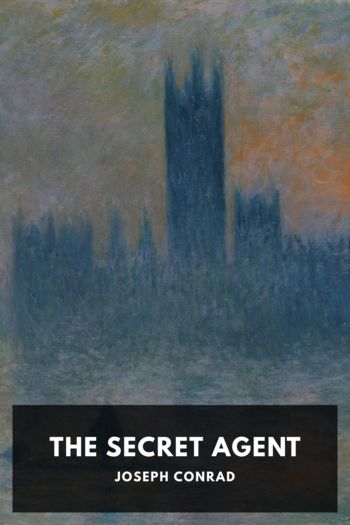Hidden History: Lost Civilizations, Secret Knowledge, and Ancient Mysteries Brian Haughton (an ebook reader .txt) 📖

- Author: Brian Haughton
Book online «Hidden History: Lost Civilizations, Secret Knowledge, and Ancient Mysteries Brian Haughton (an ebook reader .txt) 📖». Author Brian Haughton
The question of whether there is any historical truth behind such legends has perplexed researchers for hundreds of years. The main problem is that so little is known about the Queen of Sheba. There seems to be no independent evidence for her existence outside of the Bible, and the historical record is silent on the great queen. Yet, she has become such a significant figure to so many cultures that it is difficult to imagine that her story is all fantasy. Modern archaeology has conjectured that if Sheba existed as an historical figure, then the ancient territory of Sheba which she ruled over would have been located either in the Kingdom of Axum in Abyssinia (modern day Ethiopia), or the Territory of Saba (in Yemen). Perhaps even both, as there is only a 15 miles strait of the Red Sea between them. The basis for this assumption is that when she visited Solomon, the gifts she brought with her included frankincense, which only grows in these two areas, and neighboring Oman. A date for her reign of around 950 B.C. is generally agreed upon.
But is there any evidence that Saba and Axum could have been the rich kingdom ruled over by an exotic queen as described in the Bible? There is evidence for a market for perfumes and incense in the Near East and Egypt at least as early as the third millennium B.C. The Kingdom of Saba was a prosperous trading nation, with control of the caravan routes that carried frankincence and spices across the desert to perfume the temples of the Mediterranean and beyond. The capital city of Saba was called Marib, and was built on the edge of the southern Arabian Desert in the dry delta of Wadi Adana. In this and area, the Sabaens needed a water supply. Consequently, beginning somewhere between 750 and 600 B.C., they constructed a dam to capture the periodical monsoon rains which fall on the nearby mountains, to irrigate the parched land around the city, making it possible to grow crops.
In 2002, Los Angeles-based documentary filmmaker, photographer, and amateur archaeologist Nicholas Clapp published Sheba: Through the Desert in Search of the Legendary Queen. Clapp proposed that the Queen of Sheba was the renowned Yemeni Queen Bilqis, the ruler of the kingdom of Saba, probably the most influential and prosperous of the five ancient southern Arabian states. Clapp also suggested, in contrast to the Biblical description, that Sheba was actually a much more powerful ruler than Solomon, whom he sees as more of a local chieftain than a mighty king. According to Clapp, the reason for the long trek to Jerusalem by Bilqis and her retinue was to take part in important trade discussions. These talks were particularly centered on bargain ing for a route through lands controlled by Solomon to facilitate long-range spice and incense trading. In effect, Sheba's embassy to Israel (as described in the Bible) could be a distorted memory of one of the first great trade missions anywhere in the world.
Bilqis is also the name given to a recently excavated temple located nine miles outside the ruins of Sabean capital Marib. The Mahram Bilqis, or Temple of the Moon God, was according to the project's field director, University of Calgary archaeology professor Dr. Bill Glanzman, a sacred site for pilgrims all over Arabia from around 1200 B.C. to A.D. 550. This huge ovoid-shaped-temple has a circumference of around 900 feet, although much of the ancient site now lies buried under the wind-blown sand. Finds from the site include bronze and alabaster statues, and large amounts of animal bones, indicating that the sanctuary was used for animal sacrifices. There is actually some written evidence in Assyrian texts of the eighth and seventh centuries B.C. that kings named Itamru and Karib-ilu were rulers of the kingdom of Saba. These kings are mentioned in connection with tributes or presents from Saba, including incense and precious stones, reminiscent of the Queen of Sheba's gifts to Solomon. However, these are references to kings and not queens; there is no specific mention of a queen of Sheba in these texts. There is also no reference to any Queen of Sheba in the many surviving Sabean inscriptions, including those from the temple site of Mahram Bilqis. Another difficulty with a Sabean origin for the 10th century B.C. biblical queen is that the kingdom of
Saba does not seem to have been fully developed by this time. While Solomon is undoubtedly an influential and noted historical ruler, we only hear of the Queen of Sheba in connection with him. Consequently, the biblical account is viewed by some researchers as an unhistorical episode written down hundreds of years after Solomon's reign, to emphasis the great king's glory and legendary wisdom.
Among the Christians of Ethiopia, located across a narrow strip of the Red Sea from Saba, there is a story (included in their epic history of kings, the Kebra Negast), that they are descended from Menelik I, the son of Sheba and Solomon, and the beginning of the Ethiopian royal dynasty. According to the tale, Menelik traveled to Jerusalem to see Solomon, his aging father, who begged him to stay and become king after his death. But Menelik rejected his offer and instead secretly returned home at night, taking with him the kingdom's most





Comments (0)